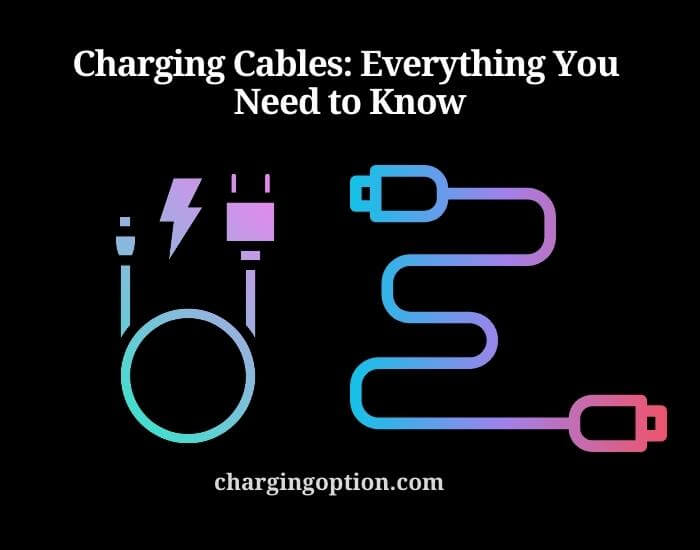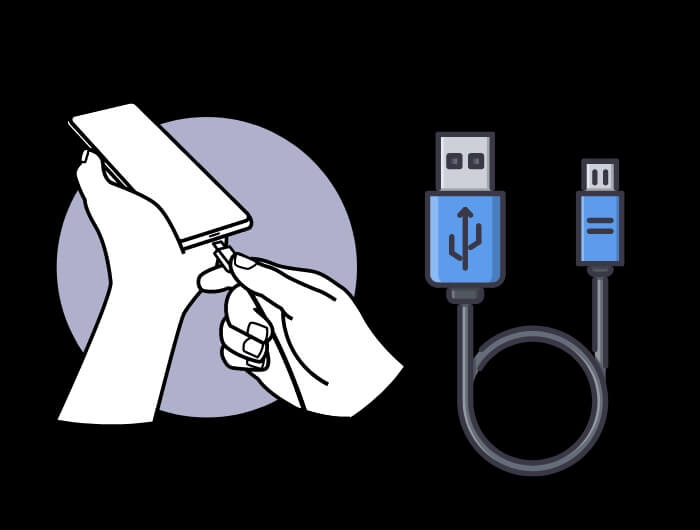Charging cables have become an essential part of our daily lives, particularly in this digital age where smartphones, tablets, laptops, and other electronic devices require charging to function. Without these cables, our devices would become useless.

We use charging cables to power up our devices while at home, in the office, or on the go. Given that charging cables are so vital to the function of our electronic devices, it is crucial to understand the different types of cables available in the market, and how to choose the right one for your needs.
Types of Charging Cables
When it comes to charging cables, there are several types available in the market. Each type of cable has its own set of advantages and disadvantages, and choosing the right one for your device can seem overwhelming. The most common types of charging cables include USB-A, USB-C, Lightning, and Micro-USB.
| USB-A | USB-A is the oldest and most common type of charging cable. It is used to charge devices such as cameras, game controllers, and older smartphones. It has a rectangular-shaped port that can fit into USB ports on computers, wall adapters, and power banks. |
| USB-C | USB-C is becoming increasingly popular due to its fast charging capabilities. This cable has a symmetrical oval-shaped port that can be plugged into the USB-C ports on laptops, tablets, smartphones, and other devices. It is capable of delivering high power output, making it ideal for fast charging. |
| Lightning | Lightning cables are exclusive to Apple products, such as iPhones, iPads, and iPods. They have a unique eight-pin connector compatible with Apple devices’ charging ports. |
| Micro-USB | Micro-USB cables are commonly used for Android devices, Bluetooth speakers, and other portable devices. They have a smaller port that can fit into the Micro-USB ports on devices. They are not as fast as USB-C cables but are still an affordable and reliable option for charging. |
Choosing the right type of cable will ensure that your device is charged efficiently and safely.
Factors to Consider When Choosing a Charging Cable
When choosing a charging cable, there are several factors that you should consider to ensure that you get the best one for your device. These factors include the type of cable, the length of the cable, durability, and charging speed.
Type of Cable
As mentioned earlier, there are different types of charging cables, and you need to choose one that is compatible with your device. It is essential to check your device’s charging port and ensure that the cable you choose can fit into it.
Length of the Cable
The length of the cable is an important consideration when choosing a charging cable. If you plan to use your device while it is charging, then you should consider a longer cable. However, longer cables tend to charge slower than shorter cables due to energy loss through the length of the cable.
Durability
Charging cables can wear out over time, and it is important to choose a cable that is durable and can withstand wear and tear. Consider the quality of the cable, the materials used to make it, and the strength of the connectors. You don’t want to keep replacing your charging cable every few weeks or months.
Charging Speed
If you want to charge your device quickly, then you should consider a cable that has a higher power output. USB-C cables tend to charge faster than USB-A and Micro-USB cables. It is important to check the charging speed of the cable before making a purchase.
Common Charging Cable Problems
Although charging cables are designed to be durable, they are still prone to wear and tear, which can lead to common problems. These problems can range from slow charging to cables that won’t charge at all. Here are some common charging cable problems you may encounter and how to solve them:
Frayed or Broken Cables
One of the most common charging cable problems is fraying or breaking. This can be caused by regular use or mishandling. When this happens, the cable may not work at all, or it may charge slowly. To prevent fraying, avoid bending the cable too much or wrapping it too tightly. If your cable is already frayed, you can try covering the affected area with electrical tape or purchasing a new cable.
Dirty or Corroded Connectors
Another common issue with charging cables is dirty or corroded connectors. This can happen when the cable is exposed to dust, moisture, or other elements. To fix this problem, use a soft cloth to clean the connectors gently. You can also use a cotton swab dipped in rubbing alcohol to clean the connectors.
Incompatible Cables
Sometimes, the problem with a charging cable is that it is incompatible with the device you are trying to charge. This can happen if you use a cable that is designed for a different device or is of a different type. To avoid this problem, ensure that you use a cable that is compatible with your device.
Slow Charging
If your device is charging slowly, it could be due to a low-power output cable or an outdated charger. To solve this problem, use a cable that has a higher power output or invest in a new charger with a higher wattage.
Overheating
When a charging cable overheats, it can be dangerous and can cause damage to your device. This can happen when you use a low-quality cable or a charger that is not compatible with your device. To prevent this problem, use high-quality cables and chargers that are designed for your device.
How to Care for Your Charging Cables?
Charging cables are an essential accessory for our devices, and it’s important to take care of them to ensure that they last long and work efficiently. Here are some tips on how to care for your charging cables:

Handle with Care
Charging cables are sensitive, and you should handle them with care to avoid fraying, breaking, or tearing. Avoid twisting or bending the cable, and don’t wrap it tightly around your device. When disconnecting the cable, pull it gently and avoid yanking it out.
Store Cables Properly
Storing your charging cables properly can help to prevent tangling, bending, and other damages. To store your cables, roll them neatly and secure them with a rubber band or cable tie. You can also use cable organizers or cases to keep them organized and prevent tangling.
Keep Cables Clean
Dirt, dust, and debris can accumulate on your charging cable over time, leading to poor connectivity and even damage. To keep your cables clean, wipe them with a soft cloth or cotton swab dipped in rubbing alcohol. Avoid using water or harsh chemicals that can cause damage to the cable.
Unplug the Cable After Charging:
Leaving your charging cable plugged in even after your device is fully charged can cause damage to the cable, as well as your device’s battery. Unplugging the cable after charging can help to preserve the life of your device’s battery and prevent damage to the cable.
Use High-Quality Cables
Investing in high-quality charging cables can go a long way in ensuring that they last long and work efficiently. Cheap or low-quality cables can wear out quickly, causing damage to your device or even posing a safety hazard. Always choose reputable brands and avoid buying counterfeit or low-quality cables.
What Charging Adapter Should I Use with Different Charging Cables?
When deciding on charging adapter options for different charging cables, it’s important to consider the compatibility of the adapter with the device and cable. USB-A, USB-C, and lightning cables all require different adapters. Make sure to match the correct voltage and amperage to ensure a safe and efficient charge.
Final Words
Charging cables are an essential accessory for our devices, and it’s important to choose the right type, take care of them properly, and address common issues that may arise.
There are different types of charging cables, including USB-A, USB-C, and Lightning cables, each with unique features and advantages. When choosing a cable, it’s important to consider factors such as compatibility, length, durability, and power output.
Common charging cable problems such as fraying or broken cables, dirty or corroded connectors, incompatible cables, slow charging, and overheating can be addressed by taking proper care of your cables, using high-quality cables and chargers, and handling them with care.
So, choose the right cable, store and handle it properly, keep it clean, unplug it after charging, and invest in high-quality cables. With these simple steps, you can avoid the frustration of dealing with damaged or malfunctioning cables and enjoy a reliable charging experience.
